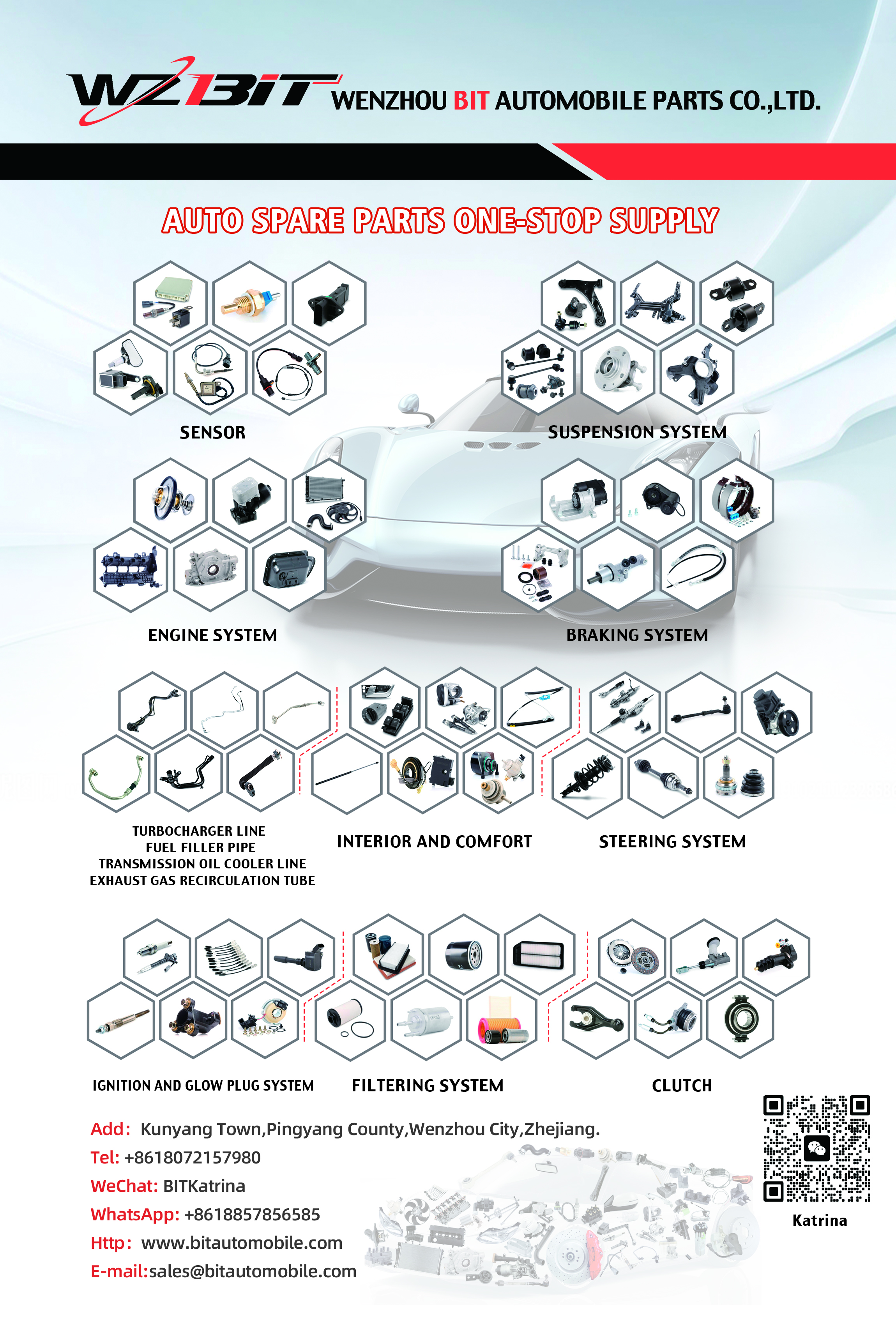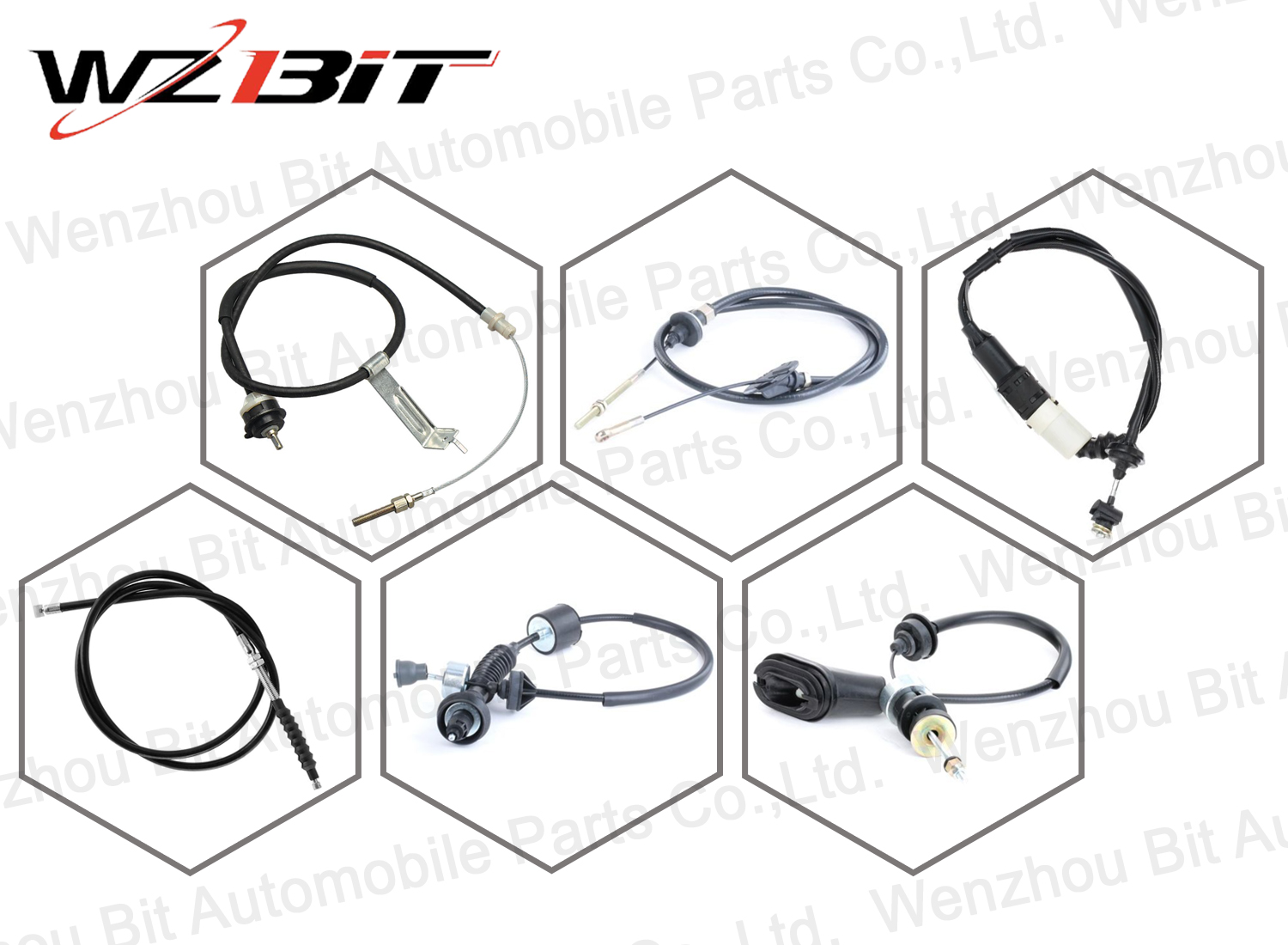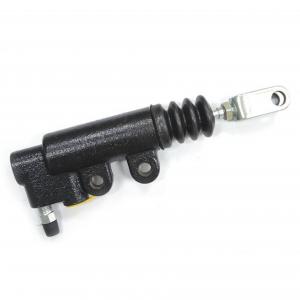Clutch Cable

The clutch cable is an essential component in vehicles with manual transmissions. Its primary function is to connect the clutch pedal to the clutch release mechanism, allowing the driver to engage and disengage the clutch when shifting gears.

OE Number
| 41510-0X910 | 415100X910 |
| 41510-0X911 | 415100X911 |
Compatible Applications
| Make | Model | Year | Variant | Type | Chassis | Engine |
| Hyundai | i10 | 2017 | Petrol Hatch | 1 | FWD II BA,IA | 998cc 49KW 67HP G3LA |
| Hyundai | i10 | 2017 | Petrol Hatch | 1.2 | FWD II BA,IA | 1248cc 64KW 87HP G4LA |
| Hyundai | i10 | 2017 | Petrol Hatch | 1.2 | FWD II BA,IA | 1248cc 65KW 88HP G4LA |
| Hyundai | i10 | 2017 | Petrol Hatch | 1 | FWD I PA | 998cc 51KW 69HP G3LA |
| Hyundai | i10 | 2017 | Petrol Hatch | 1.2 | FWD I PA | 1248cc 64KW 87HP G4LA |
| Hyundai | i10 | 2017 | Petrol Saloon | 1.2 | FWD II -- | 1248cc 64KW 87HP G4LA |
| Hyundai | i10 | 2017 | Petrol Saloon | 1.2 | FWD II -- | 1248cc 65KW 88HP G4LA |
| Hyundai | i10 | 2016 | Petrol Hatch | 1 | FWD II BA,IA | 998cc 49KW 67HP G3LA |
| Hyundai | i10 | 2016 | Petrol Hatch | 1.2 | FWD II BA,IA | 1248cc 64KW 87HP G4LA |
| Hyundai | i10 | 2016 | Petrol Hatch | 1.2 | FWD II BA,IA | 1248cc 65KW 88HP G4LA |
| Hyundai | i10 | 2016 | Petrol Hatch | 1 | FWD I PA | 998cc 51KW 69HP G3LA |
| Hyundai | i10 | 2016 | Petrol Hatch | 1.2 | FWD I PA | 1248cc 64KW 87HP G4LA |
| Hyundai | i10 | 2016 | Petrol Saloon | 1.2 | FWD II -- | 1248cc 64KW 87HP G4LA |
| Hyundai | i10 | 2016 | Petrol Saloon | 1.2 | FWD II -- | 1248cc 65KW 88HP G4LA |
| Hyundai | i10 | 2015 | Petrol Hatch | 1 | FWD II BA,IA | 998cc 49KW 67HP G3LA |
| Hyundai | i10 | 2015 | Petrol Hatch | 1.2 | FWD II BA,IA | 1248cc 64KW 87HP G4LA |
| Hyundai | i10 | 2015 | Petrol Hatch | 1.2 | FWD II BA,IA | 1248cc 65KW 88HP G4LA |
| Hyundai | i10 | 2015 | Petrol Hatch | 1 | FWD I PA | 998cc 51KW 69HP G3LA |
| Hyundai | i10 | 2015 | Petrol Hatch | 1.2 | FWD I PA | 1248cc 64KW 87HP G4LA |
| Hyundai | i10 | 2015 | Petrol Saloon | 1.2 | FWD II -- | 1248cc 64KW 87HP G4LA |
| Hyundai | i10 | 2015 | Petrol Saloon | 1.2 | FWD II -- | 1248cc 65KW 88HP G4LA |
| Hyundai | i10 | 2014 | Petrol Hatch | 1 | FWD II BA,IA | 998cc 49KW 67HP G3LA |
| Hyundai | i10 | 2014 | Petrol Hatch | 1.2 | FWD II BA,IA | 1248cc 64KW 87HP G4LA |
| Hyundai | i10 | 2014 | Petrol Hatch | 1.2 | FWD II BA,IA | 1248cc 65KW 88HP G4LA |
| Hyundai | i10 | 2014 | Petrol Hatch | 1 | FWD I PA | 998cc 51KW 69HP G3LA |
| Hyundai | i10 | 2014 | Petrol Saloon | 1.2 | FWD II -- | 1248cc 65KW 88HP G4LA |
| Hyundai | i10 | 2013 | Petrol Hatch | 1 | FWD II BA,IA | 998cc 49KW 67HP G3LA |
| Hyundai | i10 | 2013 | Petrol Hatch | 1.2 | FWD II BA,IA | 1248cc 64KW 87HP G4LA |
| Hyundai | i10 | 2013 | Petrol Hatch | 1 | FWD I PA | 998cc 51KW 69HP G3LA |
| Hyundai | i10 | 2013 | Petrol Hatch | 1.2 | FWD I PA | 1197cc 59KW 80HP G4UG |
| Hyundai | i10 | 2013 | Petrol Hatch | 1.2 | FWD I PA | 1248cc 63KW 86HP G4LA |
| Hyundai | i10 | 2013 | Petrol Hatch | 1.2 LPG | FWD I PA | 1248cc 57KW 78HP G4LA |
| Hyundai | i10 | 2013 | Petrol Saloon | 1.2 | FWD II -- | 1248cc 65KW 88HP G4LA |
| Hyundai | i10 | 2012 | Petrol Hatch | 1 | FWD I PA | 998cc 51KW 69HP G3LA |
| Hyundai | i10 | 2012 | Petrol Hatch | 1.2 | FWD I PA | 1197cc 59KW 80HP G4UG |
| Hyundai | i10 | 2012 | Petrol Hatch | 1.2 | FWD I PA | 1248cc 63KW 86HP G4LA |
| Hyundai | i10 | 2012 | Petrol Hatch | 1.2 LPG | FWD I PA | 1248cc 57KW 78HP G4LA |
| Hyundai | i10 | 2011 | Petrol Hatch | 1 | FWD I PA | 998cc 51KW 69HP G3LA |
| Hyundai | i10 | 2011 | Petrol Hatch | 1.2 | FWD I PA | 1197cc 59KW 80HP G4UG |
| Hyundai | i10 | 2011 | Petrol Hatch | 1.2 | FWD I PA | 1248cc 57KW 78HP G4LA |
| Hyundai | i10 | 2011 | Petrol Hatch | 1.2 | FWD I PA | 1248cc 63KW 86HP G4LA |
| Hyundai | i10 | 2011 | Petrol Hatch | 1.2 LPG | FWD I PA | 1248cc 57KW 78HP G4LA |
| Hyundai | i10 | 2010 | Petrol Hatch | 1.2 | FWD I PA | 1197cc 59KW 80HP G4UG |
| Hyundai | i10 | 2010 | Petrol Hatch | 1.2 | FWD I PA | 1248cc 57KW 78HP G4LA |
| Hyundai | i10 | 2010 | Petrol Hatch | 1.2 LPG | FWD I PA | 1248cc 57KW 78HP G4LA |
| Hyundai | i10 | 2009 | Petrol Hatch | 1.2 | FWD I PA | 1197cc 59KW 80HP G4UG |
| Hyundai | i10 | 2009 | Petrol Hatch | 1.2 | FWD I PA | 1248cc 57KW 78HP G4LA |
| Hyundai | i10 | 2008 | Petrol Hatch | 1.2 | FWD I PA | 1197cc 59KW 80HP G4UG |
| Hyundai | i10 | 2008 | Petrol Hatch | 1.2 | FWD I PA | 1248cc 57KW 78HP G4LA |
| Hyundai | i10 | 2007 | Petrol Hatch | 1.2 | FWD I PA | 1197cc 59KW 80HP G4UG |
Construction
A typical clutch cable consists of:
- Inner Cable: A strong, flexible wire made of steel or similar material that transmits the force from the clutch pedal to the clutch mechanism.
- Outer Sheath: A protective covering made of plastic or rubber that encases the inner cable, preventing it from damage and reducing friction.
- Adjusters: Mechanisms at both ends of the cable to adjust tension, ensuring proper clutch operation.
- End Fittings: Connectors that attach the cable to the clutch pedal and the clutch release fork or lever.
Operation
1. Pedal Engagement: When the driver presses the clutch pedal, the inner cable moves within the outer sheath, pulling the clutch release fork or lever.
2. Clutch Disengagement: The movement disengages the clutch, separating the engine from the transmission, allowing the driver to shift gears.
3. Return Action: When the clutch pedal is released, the cable returns to its original position, re-engaging the clutch and connecting the engine to the transmission.
Importance
- Gear Shifting: Enables smooth and efficient shifting of gears by disengaging the clutch.
- Vehicle Control: Provides the driver with control over power transmission from the engine to the wheels.
- Clutch Longevity: Proper function of the clutch cable ensures the longevity of the clutch components by preventing excessive wear.
Maintenance
Regular maintenance and inspection of the clutch cable are crucial to ensure smooth and reliable clutch operation:
- Visual Inspection: Check the cable for signs of wear, fraying, or damage to the outer sheath.
- Adjustment: Ensure the cable tension is properly adjusted to prevent clutch slippage or difficulty in gear shifting.
- Lubrication: Some cables may require periodic lubrication to reduce friction and ensure smooth movement.
Replacement
If the clutch cable shows signs of damage or wear, it should be replaced promptly to avoid clutch failure. Replacement typically involves:
1. Locating the Cable: Identify the routing of the clutch cable from the clutch pedal to the clutch release mechanism.
2. Disconnecting: Detach the cable from the clutch pedal and the clutch release fork or lever, often requiring the removal of retaining clips or bolts.
3. Removing the Old Cable: Carefully remove the old cable from its routing through the engine bay.
4. Installing the New Cable: Route the new cable through the same path as the old one, securing it in place with clips or brackets.
5. Connecting: Attach the new cable to the clutch pedal and the clutch release fork or lever.
6. Adjusting: Adjust the cable tension to ensure proper clutch operation.
7. Testing: Test the clutch operation to ensure smooth and reliable gear shifting.
In Summary
The clutch cable is a critical component for manual transmission vehicles, enabling the driver to control the engagement and disengagement of the clutch for smooth gear shifting. Regular inspection, maintenance, and timely replacement of the clutch cable are essential for optimal vehicle performance and safety.
Send your message to us:











